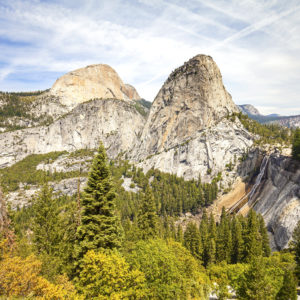Editor’s Note: For an alternative viewpoint, please see: Point: Management, Not Tourists, Hurting National Parks
During this centennial year, national parks are experiencing record visitation levels, and also increased demands for non-traditional recreational activities. While long-established laws and policies require that public uses of national parks must continue, careful evaluation is required to determine circumstances when access should be restricted.
National Park Service Management Policies state that “National Parks belong to all Americans, and the National Park Service will welcome all Americans to experience their parks.” These policies further declare that “the Service will focus special attention on visitor enjoyment of the parks while recognizing that the NPS mission is to conserve unimpaired each park’s natural and cultural resources and values for the enjoyment, education, and inspiration of present and future generations.”
Such policies are based upon the law that established the National Park Service in 1916, which required that the newly established agency provide for the enjoyment of the parks in such a way that park resources are not impaired for future generations.
Since establishment, our national parks have long provided for many uses consistent with legislation and park purposes, such as hiking, horseback riding, camping, picnicking, and a wide variety of interpretive programs to name a few. Moreover, park managers are increasingly asked to accommodate a broad range of non-traditional uses such as bicycle and foot races, newly invented extreme adventure sports, etc. To comply with the 1916 act, such events can be permitted only when they are consistent with the purpose and values of the park.
The ever-growing popularity of parks can result in overcrowding that adversely harms the visitor experience and threatens park resources. Growing demands on park staff can also result in the inability of dedicated employees to respond adequately to issues that may arise, whether they are law enforcement or medical emergencies, or simply day-to-day maintenance of facilities.
Limits on types of use and in some cases, the total numbers of people and cars in some places and seasons, have long been determined to be necessary to ensure a safe, meaningful visit to parks. For example, limits on the number of permits to visit the most popular wilderness areas were established more than 50 years ago.
Unfortunately, reduced openings of campgrounds, visitor centers and even some closures may be necessary when funding levels are insufficient to meet visitor and resource protection needs.
Visitor capacity is often controlled by design; the number campgrounds and picnic areas, the number of sites in a campground, the number of parking places in developed areas, and even the number of seats in a theater provide control. Some park areas contain threatened and endangered species that are protected by a variety of laws, and seasonal access must be limited to allow certain species to complete their nesting cycles.
For other parks, capacity is often defined by visitor perception — what they consider as “crowded.” For example, unacceptably long lines at the Washington Monument and the White House have led to the implementation of a reservation system. This type of approach could also become necessary during busy seasons in popular parks such as Yosemite and Great Smoky Mountains. It is not uncommon for the Yosemite Valley to be extremely crowded during certain times of the year; there simply aren’t enough parking spaces, and building more would inevitably harm the quality of visitor experiences and unacceptably damage park resources. When parks reach capacity, steps have to be taken in order to manage visitation, which has long included limiting access and visitor use.
In conclusion, the American public loves its national parks, and visitors from all over the world come to visit as well. The parks are an economic engine that collectively generate more than $32 billion in total economic output to the regions and communities that surround them. The national parks are special places whether they serve as reservoirs of our natural resources or places where our cultural history is preserved and shared with park visitors. Parks are places where recreational use is encouraged when appropriate. However, law, policy and simply good judgment require that public use of parks must sometimes be restricted through a variety of measures.
As we move forward into the next 100 years, and should our population continue to grow, park managers will be challenged to be even more creative in their application of the full array of tools available in order to prevent degradation of park resources and values so that these special places remain what a popular poet wrote — “America’s Best Idea.”

